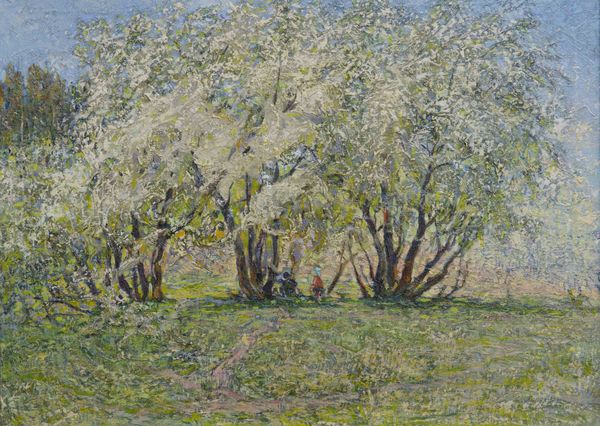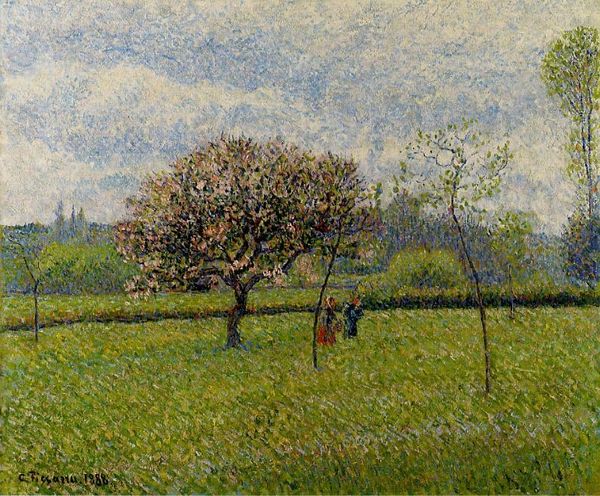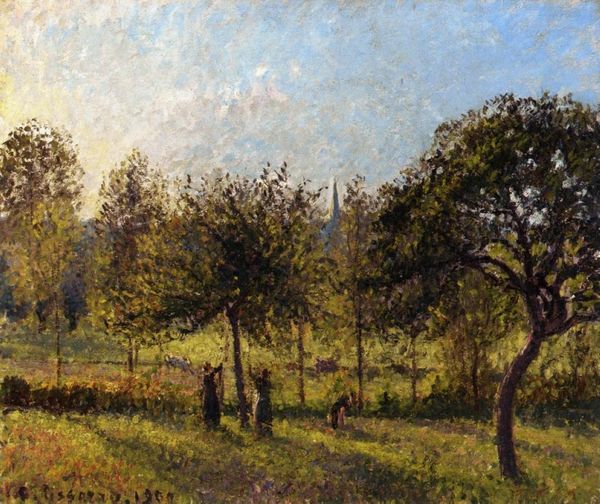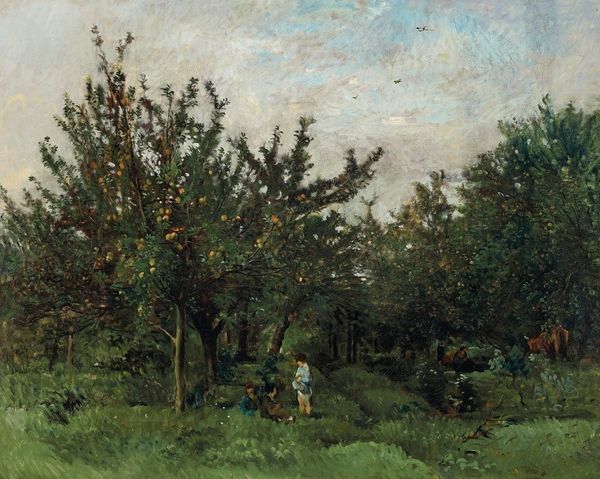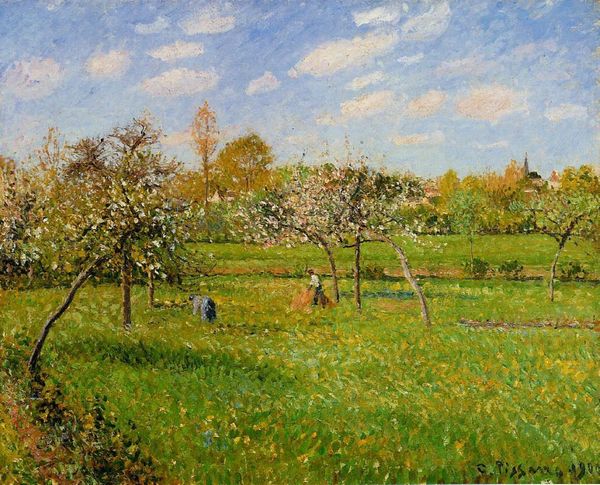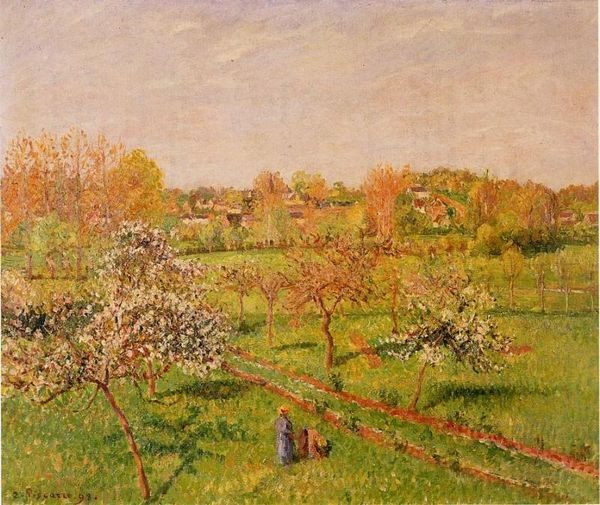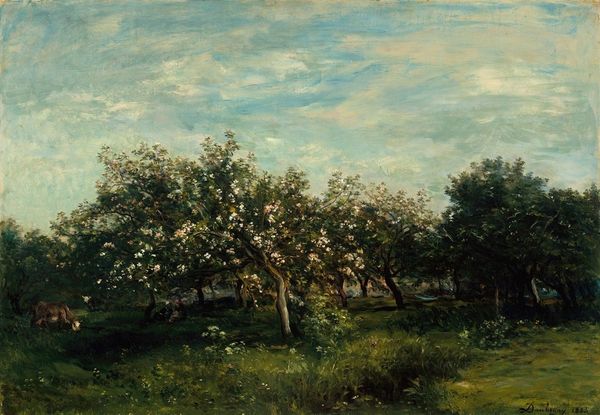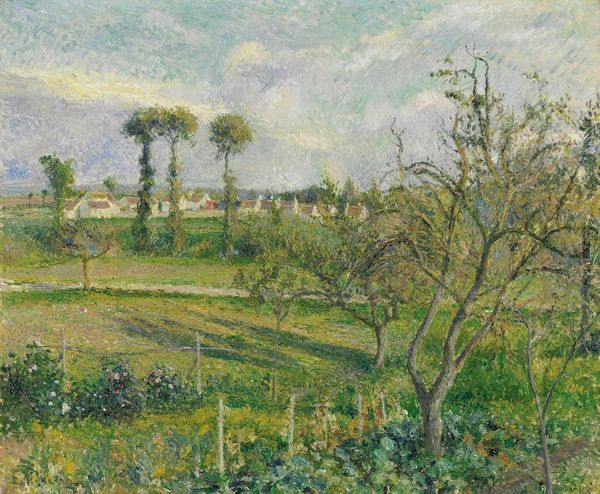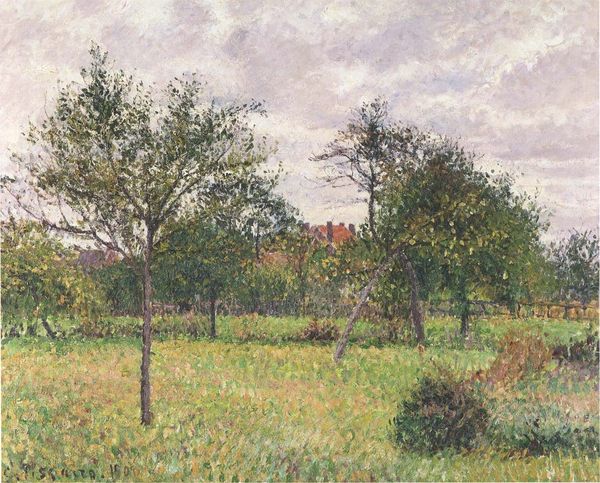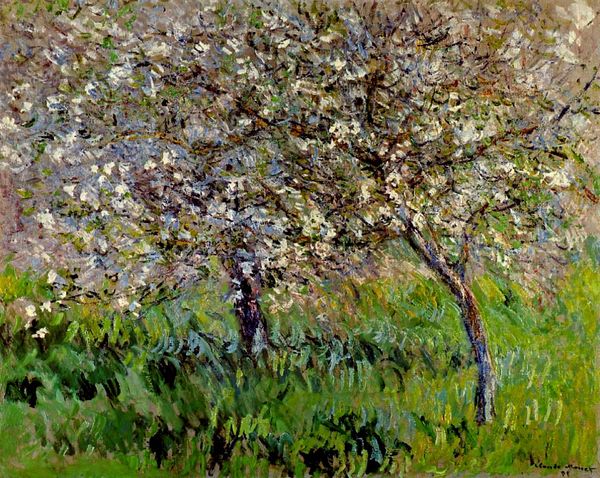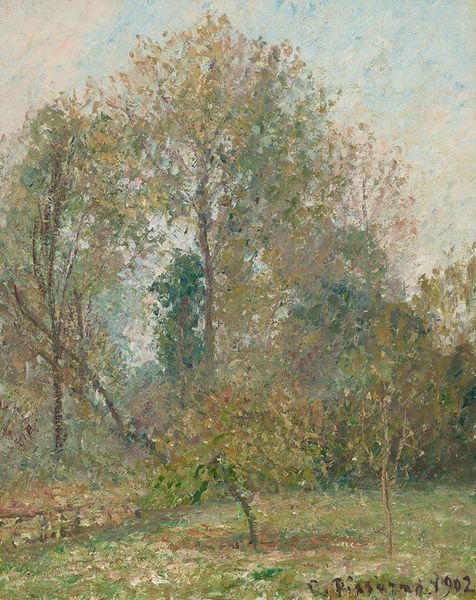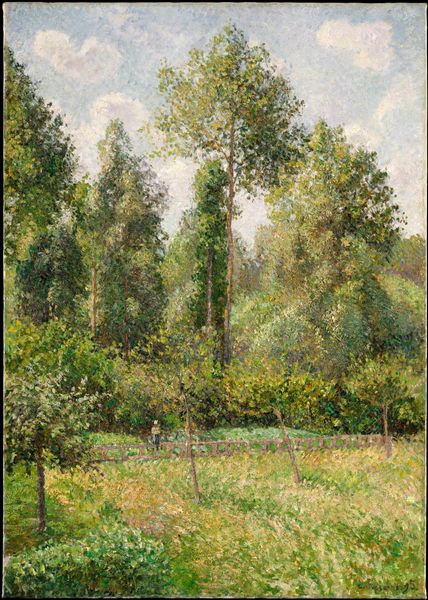
painting, plein-air, oil-paint
#
painting
#
impressionism
#
plein-air
#
oil-paint
#
landscape
#
figuration
#
genre-painting
#
post-impressionism
#
realism
Copyright: Public domain
Editor: This is "Spring at Eragny," an oil painting by Camille Pissarro. I believe he painted it around 1900. It's such a peaceful, almost dreamlike scene, with all that soft light and gentle brushstrokes. What do you see in this piece? Curator: The blossoming trees immediately draw my eye, not just as symbols of spring’s renewal, but also as potent carriers of cultural memory. For centuries, the flowering orchard has signified fertility, hope, and the ephemeral beauty of life across many cultures. Note the figures in the middle ground—they’re almost archetypal, anonymous inhabitants of this idyllic space. Editor: So, are you saying Pissarro is drawing on a tradition of orchards representing something more than just pretty scenery? Curator: Precisely! The orchard, as depicted here, acts as a visual container for these collective hopes and anxieties associated with cycles of nature and human existence. It whispers of generations past who tilled the soil and shared similar hopes. Consider, too, how the Impressionists sought to capture fleeting moments; Pissarro seems to acknowledge both the temporary and the timeless within this landscape. Do you sense that tension as well? Editor: I do now that you mention it. The light makes it feel so immediate, but those figures… they could be anyone, anywhere. It's a powerful combination. I’d always thought Impressionism was just about surface appearances. Curator: Ah, but even surface appearances are rich with symbolism, coded cultural information that resonates deeply if we learn how to read it. Pissarro provides a surface which seems effortless. Editor: I see your point. Now, I see a landscape steeped in shared cultural symbolism and loaded historical meaning. Thank you!
Comments
No comments
Be the first to comment and join the conversation on the ultimate creative platform.
